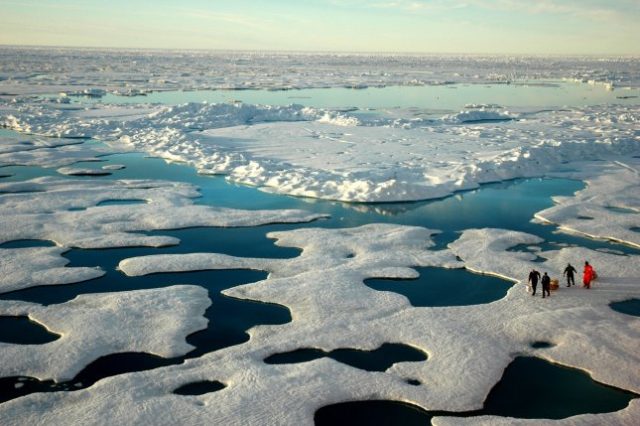April 7 (UPI) — Scientists said Thursday that methane emissions, the second biggest threat to human-caused global warming after carbon dioxide, rose again to a record level in 2021.
Scientists from the National Oceanic and Atmospheric Administration based these findings on an analysis of data from their global sampling network.
The preliminary analysis showed an annual increase of atmospheric methane in 2021 of 17 parts per billon, the largest increase since such measurements began in 1983.
The previous largest annual increase of atmospheric methane was in 2020, which had an increase of 15.3 ppb, despite COVID-19 pandemic shutdowns, the latest analysis shows.
Global methane emissions in 2021 were 15% higher on average than the 1984-2006 period, an NOAA Global Monitoring Laboratory graphic shows.
Scientists also found that levels of another heat-trapping greenhouse gas, carbon dioxide, the main driver of climate change, continued to increase at historically high rates.
The global surface average of carbon dioxide in 2021 was 414.7 parts per million, according to the NOAA analysis, representing an increase of 2.66 ppm over the 2020 average, and marking the 10th consecutive year carbon dioxide increased by more than 2 ppm.
“Our data show that global emissions continue to move in the wrong direction at a rapid pace,” NOAA Administrator Rick Spinrad, Ph.D., said in a statement. “The evidence is consistent, alarming and undeniable. We need to build a Climate Ready Nation to adapt for what’s already here and prepare for what’s to come. At the same time, we can no longer afford to delay urgent and effective action needed to address the cause of the problem — greenhouse gas pollution.”
“Reducing methane emissions is an important tool we can use right now to lessen the impacts of climate change in the near term, and rapidly reduce the rate of warming,” Spinrad added. “Let’s not forget that methane also contributes to ground-level ozone formation, which causes roughly 500,000 premature deaths each year around the world.”
Last year, human activity emitted an estimated 36 billion tons of carbon dioxide into the atmosphere, and roughly 640 million tons of methane were emitted during the same period, according to the NOAA.
Methane resides in the atmosphere for approximately nine years, but the present carbon dioxide emissions will warm the planet for thousands of years, the NOAA noted.
“The effect of carbon dioxide emissions is cumulative,” said Pieter Tans, senior scientist with Global Monitoring Laboratory in the NOAA statement. “About 40% of the Ford Model T emissions from 1911 are still in the air today. We’re halfway to doubling the abundance of carbon dioxide that was in the atmosphere at the start of the Industrial Revolution.”
The finding show the huge challenges global policy makers who signed the Global Methane Pledge, which aims to cut emissions by 30% by the end of the decade, face.
Carbon dioxide is mainly emitted through the combustion of fossil fuels for energy and transportation, according to the Environmental Protection Agency.
Though carbon dioxide remains in the atmosphere longer than methane, methane is roughly 25 times more powerful at trapping heat in the atmosphere, which gives it a critical role in the rate of climate change, according to the NOAA.
Fossil fuel production, transport and use, decay in wetlands, and grazing animals such as cows generate methane, and while it’s hard to pinpoint the exact cause of the methane increase, scientists estimate fossil fuel production contributes roughly 30% of total emissions, the NOAA further noted.

COMMENTS
Please let us know if you're having issues with commenting.